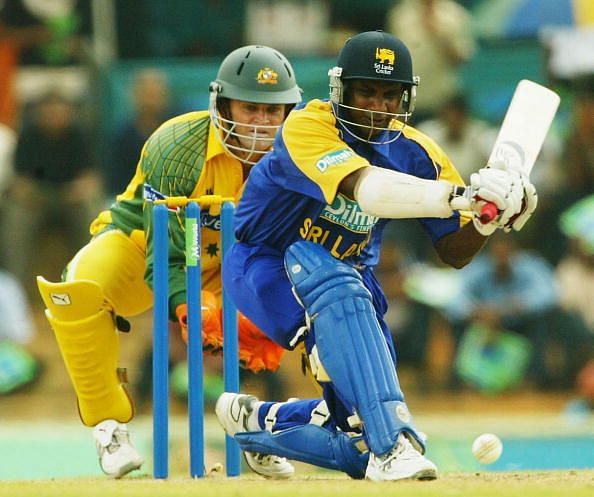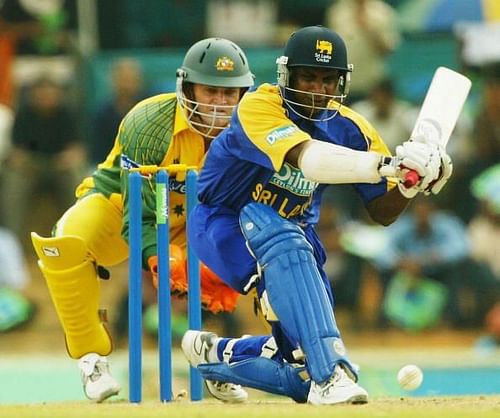
Pinch Hitting: From evolution to end

The era of the 90s was pretty exciting in cricket. The decade saw 3 World Cups in 1992, 1996 and 1999 and on all three occasions, one team from the subcontinent made it to the finals. The first 15 over field restriction which permitted only 2 fielders outside the circle gave rise to a new breed of players called ‘the pinch hitters.’
The game of cricket was never so entertaining until the trend came into existence in the early 90s. These pinch-hitters simply carried a baggage of naked confidence to hit every bowler out of the park. Their murderous intent seldom carried an element of doubt when it came to hitting the best opening bowler in the opposition. Coming as openers or at the fall of 1st or 2nd wicket, these gutsy men always meant business right from the word, 'Go.' They never feared to sacrifice their wicket in order to accelerate the run rate. Some of the greatest bowlers were made victims of this modern cricketing warfare.
But first some history. Firstly, pinch-hitting is not a cricketing term. The term is picked up from the game of baseball when a batter is replaced for good and the substitute batter is termed as a ‘pinch-hitter.’ In cricket, substitutes or 12th man does not get a chance to bat in the middle. So when a lower order batsman, lesser known to play textbook cricketing shots is promoted up the order, he is termed as a ‘pinch-hitter.’ In the past 2 decades, wicket-keepers, specialist bowlers, and bowling all-rounders took up the role of a pinch hitter at varied intervals. Some succeeded, some perished, but the introduction of pinch hitters completely changed the dynamics of the game. From a team's perspective, success or failure of pinch hitters hardly mattered. If these men failed, the team at the dugout seldom panicked. Afterall, the wicket of a lower order batsman barely carried any weightage. But, if they succeeded in their mission, then it always gave the team an outside chance to win the match.
In 1996, the then Lankan captain Arjuna Ranatunga and coach Dav Whatmore sensed a potential in two of their lower order batsmen prior to the World Cup. Sanath Jayasuriya and Romesh Kaluwitharana were unheard names in world cricket, but today they are regarded as cricketing revolutionaries. In the 1996 World Cup, Sri Lankans came as underdogs but walked out of the tournament as champions. A lot of credit goes to their captain and coach for utilizing two of their underrated players to good effect. In 6 matches, Jayasuriya amassed 221 runs at a strike rate of 131.54, while Kaluwitharana with just 73 runs to his tally registered a monstrous strike rate of 140.38. It never mattered how the runs came in the first 15 overs. The 2 Lankan openers always came with an intent to clobber every bowler. The result, Sri Lanka walked out of the tournament as World Champions.
The Lankan assault continued even after their 1996 World Cup triumph. In the 1996 edition of Singer Cup, held in Singapore, Sanath Jayasuriya fired 134 off 65 balls. Interestingly, when Sanath was batting at 80, his partner Romesh batting alongside was yet to open his account. Sanath’s century came in just 48 balls, at then a new world record surpassing Mohammad Azharuddin’s 62 ball 100. All the major test playing nations were quick to realize the importance of having pinch hitters in the side. As a result, towards the late 90s teams started experimenting with their lower order batsmen for some pyrotechnics on top of the batting order.
In the sub-continent, Pakistan found an explosive all-rounder in the form of Shahid Afridi who held the world record of fastest ODI century for close to two decades. India struggled for a while to find their lucky mojo and tried several players like Nayan Mongia, Sunil Joshi, and Javagal Srinath. Finally, they settled with the old warhorse Robin Singh, a medium pacer who played some memorable knocks on top including a 100 against Sri Lanka. Many would consider his best knock came against Pakistan in the finals of the Independence Cup when he scored 82 off 83 balls stitching a 179 run partnership with Sourav Ganguly for the 2nd wicket. Chasing 314 runs in 48 overs was not only a remarkable feat but the highest ever ODI total chased by any team in that period.
South Africa came up with a number of options. From a wily customer like Pat Symcox to a specialist bowling all-rounder in Shaun Pollock, the South African team in the 90s had a long list of all-rounders in their arsenal. But their search ended on Lance Klusener. Better known as the Zulu warrior, Klusener having 2 ODI centuries to his credit often batted at number 3 or 4 to win crunch matches for the Proteas. For Australia, it was Ian Harvey who played a couple of good knocks batting on top. Australia in those days heavily relied on Michael Bevan, known to execute the finisher’s role to precision. For the Kiwis, it was Chris Harris, Chris Cairns, and Daniel Vettori. West Indies rather than grooming some of their existing lower order players for the role brought some explosive openers to the side. Philo Wallace, Ricardo Powell, and few other players came and perished after a few cameos.
The stipulation of first 15 over field restriction was abolished in 2005. Instead, a 10 over restriction was introduced with two 5-over power-plays. Alongside, the T20 format came into existence and this period gradually marked the end of the road for the pinch-hitters. As the game evolved to the next level, specialist T20 players rose into prominence with a new appetite for scoring runs. Today, Brendon McCullum, Chris Gayle, Suresh Raina and Ben Stokes are regarded as a firebrand of cricketers in the T20 circuit.
Cricket is likely to evolve with time. It’s hard to predict where the game would take us 25 years from now when the generation of Virat Kohli gets inducted into the ICC’s Hall of Fame. But the game of cricket will forever owe it to the 2 mighty Lankans, Sanath Jayasuriya and Romesh Kaluwitharana for setting a trend of fierce batting known as ‘pinch-hitting in cricket.’